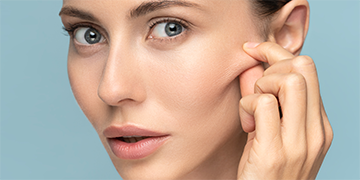Introduction: Chemical peels are a powerful skin rejuvenation treatment that has gained popularity for their ability to enhance the skin’s texture and appearance. Whether you’re dealing with acne scars, wrinkles, uneven pigmentation, or sun damage, chemical peels offer a non-invasive solution to address these common skin concerns. By applying a chemical solution to the skin, the treatment removes the outer layers, promoting cell turnover and revealing smoother, more youthful-looking skin. With customizable peel strengths, this treatment is suitable for different skin types and goals, making it an attractive option for many seeking healthier, refreshed skin. The process of a chemical peel involves applying a specially formulated chemical solution to the skin’s surface, causing controlled exfoliation and peeling. Depending on the intensity of the peel, the exfoliation can range from mild to deep, with lighter peels targeting surface-level issues like minor discoloration or roughness, and deeper peels addressing more significant concerns like wrinkles or severe scarring. This versatility makes chemical peels highly adaptable to individual needs. One of the primary benefits of chemical peels is their ability to improve skin texture and tone by removing damaged skin cells and promoting the growth of new, healthy ones. As the skin regenerates, issues like acne scars, fine lines, sunspots, and hyperpigmentation become less visible. Additionally, chemical peels help stimulate collagen production, which plays a crucial role in maintaining skin firmness and elasticity. For those concerned with aging, chemical peels offer a rejuvenating effect that can soften the appearance of fine lines and wrinkles over time. Another advantage is the relatively short recovery time, especially for lighter peels, which require little downtime and are suitable for people with busy schedules. Moreover, chemical peels can be applied to areas beyond the face, including the neck, chest, and hands, providing a comprehensive approach to skin rejuvenation. Proper aftercare, such as moisturizing and sun protection, is essential for optimal results and long-term skin health. Conclusion: In conclusion, chemical peels are an effective solution for those seeking a brighter, smoother complexion and a more youthful appearance. With the ability to address a wide range of skin concerns, from acne scars to wrinkles, this treatment offers lasting improvements for individuals of varying skin types. By removing damaged skin layers and promoting collagen production, chemical peels can significantly enhance the skin’s overall health and vibrancy. Consulting with a dermatologist is key to determining the right type of peel and ensuring safe, effective results that leave your skin refreshed and rejuvenated.

Unleash Your Inner Radiance with Transformative Fillers and Botox
Nestled in the heart of the UAE, DermaClinic stands as a beacon of aesthetic excellence, dedicated to empowering individuals to…
Read More
